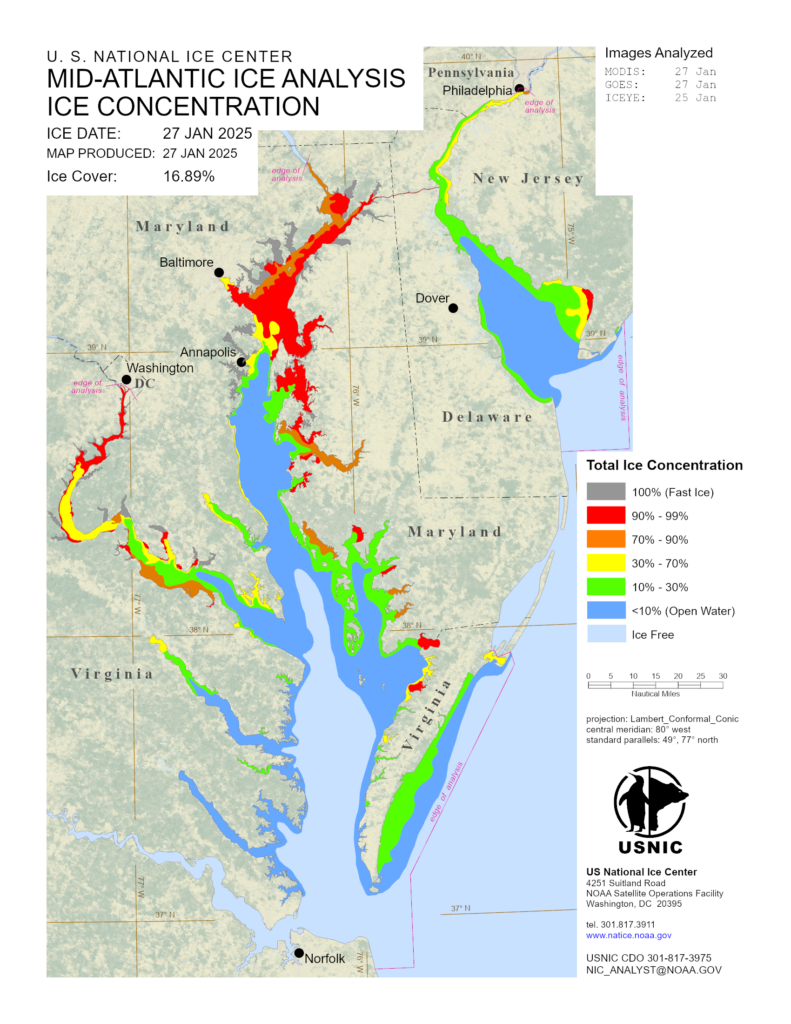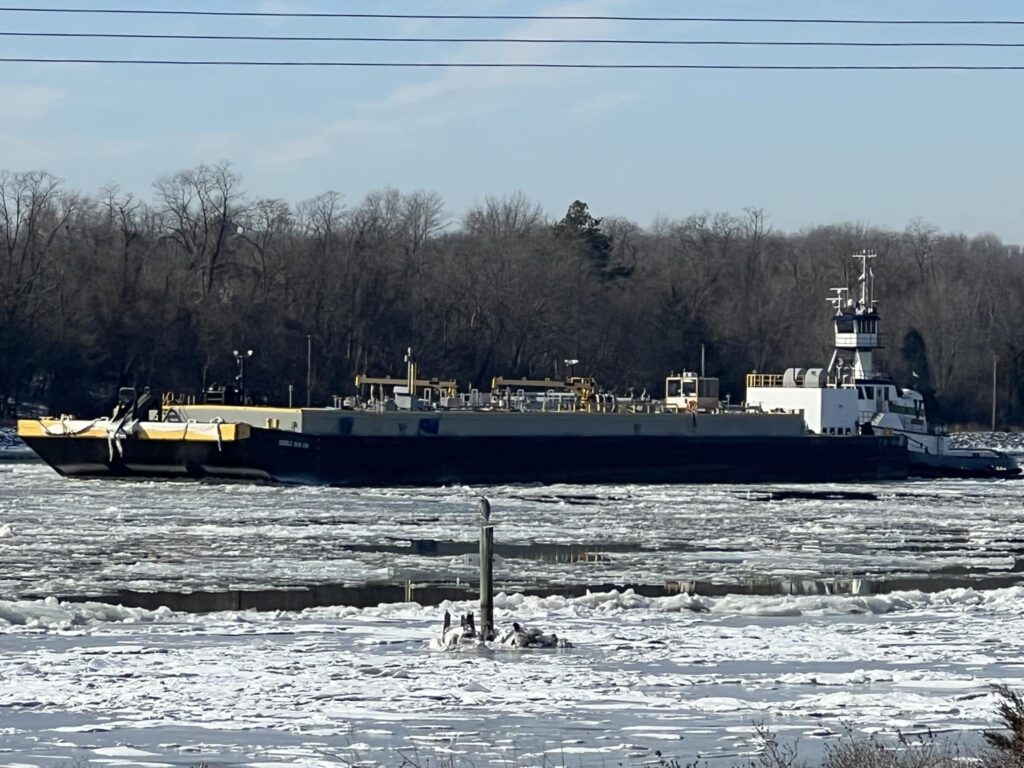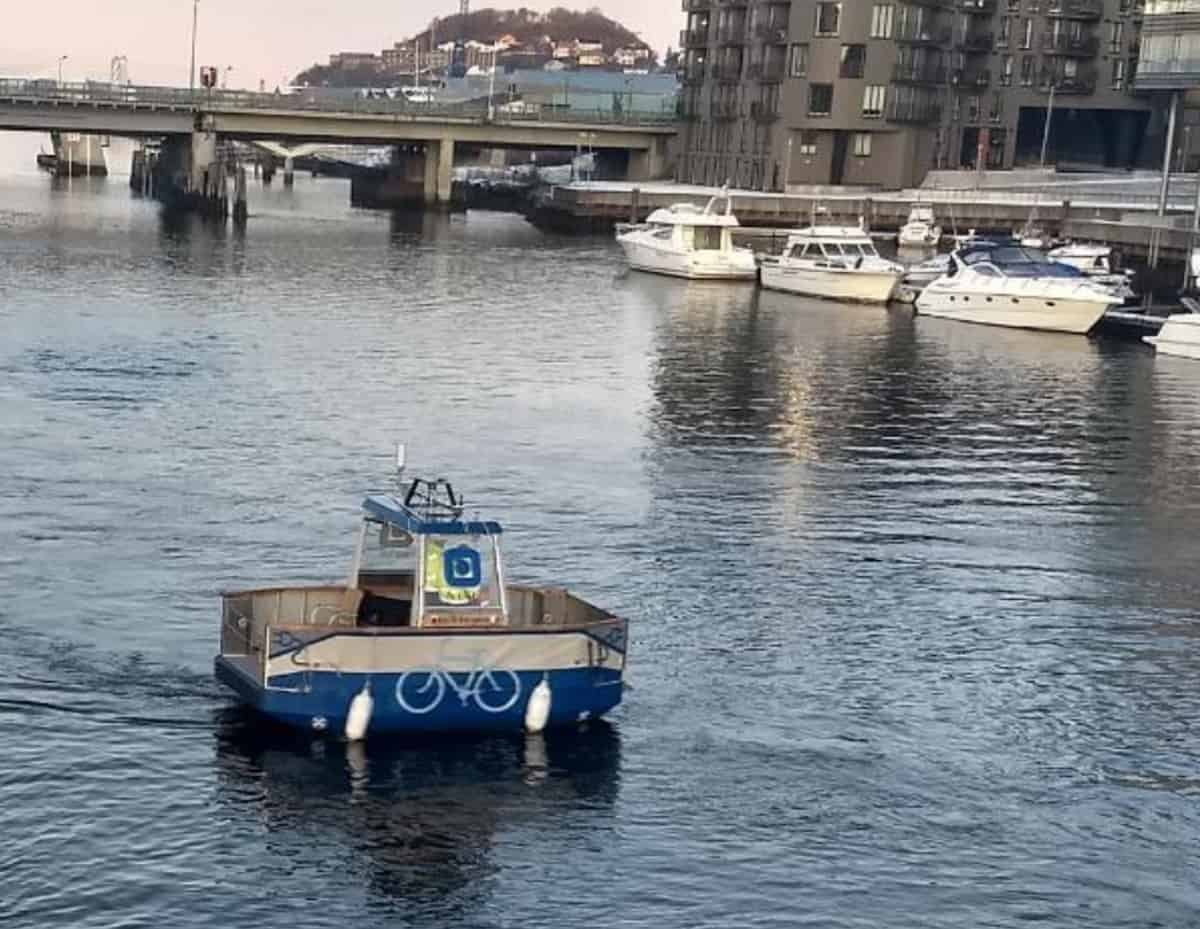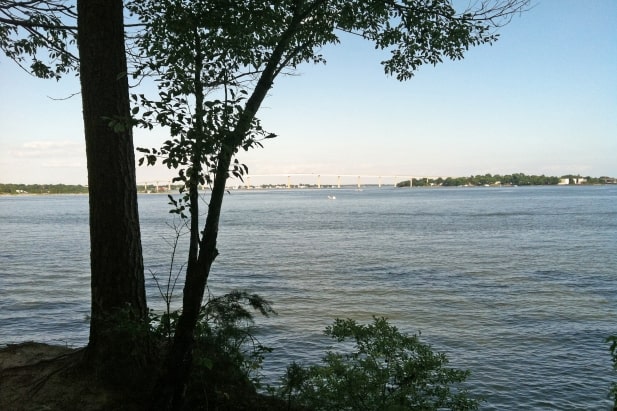A streak of sub-freezing days in the Chesapeake Bay region is still taking its toll on sections of the Bay. The Captain of the Port upgraded the head of the Chesapeake Bay, the C&D Canal, Potomac River, and “all existing tributaries within the Captain of the Port Zone” to Winter Port Condition Two.
According to the U.S. Coast Guard Sector Maryland-NCR, only certain vessels may now travel the head of the Bay, the approach to the canal, and the canal itself. Under Port Condition Two, “only steel hull vessels with 1,500 minimum shaft horsepower and a main engine cooling system design that prevents blockage from ice” may transit the area, the Captain of the Port says.
All boat operators on the Bay should take precautions, the Coast Guard says, because buoys may become extinguished or dragged off station, and smaller lights and day beacons may be destroyed by ice. Boaters are already seeing buoys dragged off station or pulled below the ice, and the Coast Guard has listed many off-station or with lights extinguished. On the Rappahannock River, 23 navigational aids are destroyed or off-station.
Another consideration the Coast Guard advises: if your boat is moored or docked at a marina, check it frequently to make sure it hasn’t been impacted by ice.
We spoke to the Maryland Department of Natural Resources (DNR) ice breaker team and learned that they are still breaking ice 2-5 inches thick in some parts of the mid-Chesapeake Bay. Calls for assistance have come from both the Eastern and western shores. Natural Resources Police, a marine contractor, yacht broker, watermens’ harbors, and even a 56-foot yacht have all requested ice breaking help. DNR says a sailboat heading out of state followed the ice breaker out of Kent Narrows, taking advantage of the clear path. DNR has also needed to help watermen out oystering in wooden boats, which struggle in the ice.

As of Monday, Jan. 27, the U.S. National Ice Center‘s Mid-Atlantic Ice Chart showed 90% ice concentration in much of the upper Chesapeake Bay tributaries, parts of the Eastern Shore, and the upper Potomac River. In fact, most areas north of the Bay Bridge is still experiencing more than 70% ice cover, and 100% on some rivers and creeks.
Thursday morning, the National Weather Service Baltimore-Washington region measured a low temperature of 4 degrees Farenheit at Dulles Airport, the coldest recorded in six years, since January 31, 2019. For the five-day stretch leading up to Thursday, the temperature never rose above freezing, allowing ice to build up in the Bay’s creeks and rivers, and even around the Bay Bridge.
That made Thursday morning the perfect time for Chesapeake Bay Magazine to join DNR’s ice breaker vessel, the A.V. Sandusky, on a mission. The day we were on board, the Coast Guard Station Annapolis requested ice breaking at their location on Fishing Creek, just south of the Severn River.
The Sandusky crew had only been out this winter a couple of times prior to Thursday. They marveled that on Wednesday, the Annapolis Harbor had been clear of ice, but literally overnight it had iced over.

John Gallagher, who supervises all hydrographic operations for DNR, says that 2015 and 2018 were “the last big ice years”, and the Sandusky may have gone out ice breaking for just one minor call last year.
The vessel’s steel-enforced bow cuts through ice with a heavy scraping sound. The boat’s 120 ton displacement, full ballast tank, and 20-foot beam all give the Sandusky the ability to safely break through ice where others can’t, Gallagher explains.
On Fishing Creek that day, the ice was at least two inches thick, Sandusky Captain Mike Simenson estimated. He approached the Coast Guard Station slips where two USCG response boats were docked, maneuvering forward and back, forward and back, to clear the area. When the ice breaker boat couldn’t get any closer, Simenson showed us how he used the vessel’s two engines to create propwash, circulating moving water around the boats to break the ice up.
The same day we were aboard the Sandusky out of Annapolis, DNR’s newest ice breaker vessel, the Eddie Somers, was hard at work on the Crisfield-Smith-Tangier route. Around those islands, where the ferries are virtually the only mode of transportation, ice-free access to the mainland can be a matter of life or death.
Even though we’ve seen a gradual warmup since the weekend, the ice breaker boats report that marinas, piers and watermens’ docks remain quite icy.
The Coast Guard asks anyone who sees ice conditions to report them to Sector Maryland/NCR Command Center on VHF radio channel 16 or call (410) 576-2693.




